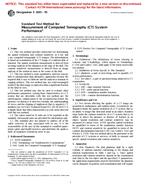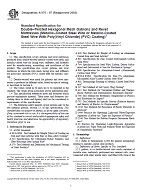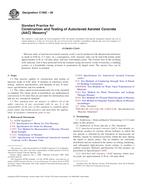1.1 This practice describes the procedures and equipment used to collect surface and subsurface soil and contaminated media samples for chemical analysis using a hand-operated bucket auger (hereafter referred to as a bucket auger; sometimes referred to as a barrel auger). Several types of bucket augers exist and are designed for sampling various types of soil. All bucket augers collect disturbed samples, but bucket augers can also be used to auger to the desired sampling depth and then, using a core-type sampler, collect a relatively undisturbed sample.
1.2 This practice does not cover the use of large (12-in. or greater diameter) bucket augers mechanically operated by large drill rigs or similar equipment, such as those described in Practice D1452, section 3.2.4.
1.3 The term bucket auger is used to differentiate this type of hand operated auger from others of the solid or hollow stem types that are also hand held or operated.
1.4 This practice does not address sampling objectives (see Practice D5792), general sample planning (see Guide D4687), sampling design (for example, where to collect samples and what depth to sample [see Guide D6044]), sampling for volatile organic compounds (see Guide D4547), equipment cleaning and decontamination (see Practice D5088), sample handling after collection such as compositing and subsampling (see Guide D6051), and sample preservation. For information on other types of augers, see Practice D1452 and Guide D4700.
1.5 This standard does not purport to address all of the safety concerns, if any, associated with its use. It is the responsibility of the user of this standard to establish appropriate safety and health practices and determine the applicability of regulatory limitations prior to use.
Product Details
- Published:
- 01/01/2010
- Number of Pages:
- 4
- File Size:
- 1 file , 130 KB


